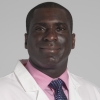(RxWiki News) You probably don’t think much about the simple function of swallowing your food. You do it naturally. However, head and neck cancer patients frequently have a lot of trouble swallowing during and after treatment. A recent study found a successful strategy for overcoming these problems.
Head and neck cancer patients who practiced a series of swallowing exercises before, during and after treatment were able to maintain better swallowing function, the study found.
By strengthening muscles in the mouth and throat, the exercises helped patients avoid a narrowing of the throat, dietary changes or the need for a feeding tube.
"Ask your oncologist about exercises to accompany cancer treatment."
Marilene Wang, MD, a professor-in-residence in the department of head and neck surgery at the University of California, Los Angeles David Geffen School of Medicine, directed this five-year study.
Head and neck cancers can develop anywhere in the mouth or throat. These malignancies are usually treated with surgery and radiation therapy.
New treatments involving targeted chemotherapy and radiation — chemoradiation (CRT) — are also used to preserve as much healthy tissue as possible.
Despite these improved approaches, about half of all head and neck cancer patients experience difficulty swallowing (dysphagia) after treatment.
"Dysphagia is a major complication of treatment of head and neck cancer with chemoradiotherapy, and leads to severe morbidity, with most trials showing that swallowing function after treatment has a marked effect on a patient’s quality of life," Tobenna Nwizu, MD, solid tumor oncologist at Taussig Cancer Institute at Cleveland Clinic, told dailyRx News.
Patients are also often troubled with dry mouth, loss of taste, a narrowing of the throat, development of scar tissue that impedes swallowing and something known as trismus, which is the inability to fully open the mouth.
These conditions can have a negative impact on the patient’s quality of life and can interfere with the ability to eat — sometimes leading to the need for a feeding tube to provide nourishment.
Dr. Wang’s study looked at the effect of exercises called swallow preservation protocol (SPP) on patients undergoing head and neck cancer treatment.
Study members met with researchers two weeks before treatment began to assess swallowing function, learn about common treatment-related side effects and be introduced to the exercises.
SPP includes such exercises as gargling liquid, swallowing while keeping the Adam’s apple elevated, chug-a-lugging (drinking without pausing), sticking out the tongue, pressing the tongue against the roof of the mouth and lifting the head while in a prone position.
The study involved 85 head and neck cancer patients between the ages of 22 and 91 who had received radiation or chemoradiation. They were urged to complete the swallowing exercises three times a day. Participants attended weekly sessions to monitor their progress.
The 57 head and neck patients who performed the exercises at least once a day during and following treatment were considered to be compliant, while the remaining 28 patients who didn't do the exercises were in the non-compliant group
One month after treatment concluded, the researchers found that 54.4 percent of compliant patients were eating a chewable diet, compared to 21.4 percent of patients in the non-compliant group.
About 23 percent of patients completing the exercises required a feeding tube, compared to 54 percent of patients who did not perform the exercises.
"This indicates the importance of religiously following a swallow preservation protocol during treatment to minimize the resultant swallowing difficulties that arise from treatment," said Dr. Nwizu, who specializes in treating head and neck cancers.
In a prepared statement, Dr. Wang said, “Our results demonstrate that compliance with swallow therapy during radiation or chemoradiation treatment is beneficial to patients’ retaining their ability to swallow after treatment is over. The real benefit of this compliance is that patients benefit immediately after treatment, and for a prolonged time afterward."
This study was published in the September issue of Otolaryngology — Head and Neck Surgery.
No outside funding or conflict of interest information was provided.




